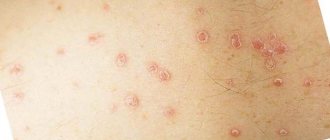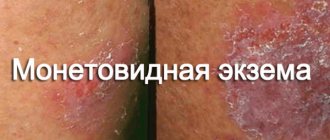Brief description of the pathology
Psoriasis is a hereditary disease that clinically manifests itself as severely scaly papules and plaques localized on the scalp, hands, forearms, elbows, feet, knees, lower back or buttocks.
Psoriasis also often affects joints and nails. This is a chronic skin disease that is difficult to treat and, as a rule, accompanies a person throughout his life.
https://www.youtube.com/watch?v=eduVT6PKVMI
According to studies by the World Health Organization, the prevalence of psoriasis among the population ranges from 1% to 3%.
General indications
Laser blood purification is also prescribed for the following purposes:
Mechanism of action of UV-B (300-380 nm).
1. Suppression of proliferation (reproduction) of keratinocytes (epidermal cells).
In psoriasis, in the area of affected skin areas (plaques), there is a pathologically increased rate of cell division in the spinous layer of the epidermis. At the same time, these cells have an increased content of keratin, which is necessary for the process of division (mitosis).
Keratin is an active chromophore that absorbs light from a certain wavelength in the UV-B range of 300-380 nm. Therefore, photo rays are absorbed specifically by the affected cells with increased mitotic activity, which leads to their death while preserving unaffected cells with a normal reproduction rate.
2. Induction of apoptosis (programmed death) of pro-inflammatory T lymphocytes. As a result of a reduction in the number of T-lymphocytes, long-term remission of the skin process is ensured.
Contraindications:
- Oncological diseases (taking medications: fluorouracil, methotrexate and others)
- Epilepsy
- Pregnancy and lactation
- Photosensitivity
- Presence of keloid scars
- Diabetes
- Skin type VI according to Fitzpatrick
- Insolation (active tanning)
- Viral diseases (herpes)
Subsequence
The course includes 5-10 procedures, depending on the patient’s condition. ILBI can be performed daily or every other day as recommended by your doctor. Each session takes 30-60 minutes and proceeds like this:
- The patient is placed on the couch, and his hand is freed from clothing.
- The hand is treated with an antiseptic.
- The device indicator is placed just above the wrist.
- A tourniquet is applied to the area above the elbow.
- A catheter is inserted into the vein.
- The tourniquet is removed.
- Turn on the device.
In this case, the patient does not experience any pain.
If prescribed by a doctor, you can take the 2nd course in 2-3 months.
Causes
The first signs of psoriasis can appear at any age. Usually this disease is diagnosed in young people from 15 to 25 years old, regardless of gender.
There are several theories of the origin of psoriasis: viral theory, genetic theory, neurogenic theory. Recent researchers have found that the main role in the development of psoriasis is played by activated T-lymphocytes, which trigger and maintain chronic inflammation of the skin.
Provoking factors for psoriasis:
- Mechanical skin injuries (Koebner phenomenon)
- Infections
- Stress
- Medicines for systemic use
- Alcohol
Clinical forms of psoriasis:
- Plaque psoriasis (ordinary, vulgar)
- Guttate psoriasis
- Pustular psoriasis
- Seborrheic psoriasis
- Psoriasis of the palms and soles
- Erythroderma psoriatic
- Arthropathic psoriasis (affecting joints)
The most common is plaque (ordinary, vulgar) psoriasis, which manifests itself in the form of clearly defined reddish plaques covered with silvery scales. The rashes are symmetrical, located on the elbows, knees, scalp, and sacrum area, but can potentially appear on any part of the body.
Therapeutic effects
ILBI is unique in its properties and is many times superior to any pharmacological treatment. The effects of laser blood cleansing can be divided into general and therapeutic.
General effects
Therapeutic effects
Types of laser and phototherapy
Treatment of psoriasis with laser beams helps improve the general condition of the body and skin. In addition, laser therapy does not cause side effects, acting directly on the lesion, unlike drug treatment.
Modern physiotherapy for the treatment of psoriasis uses 3 techniques:
- excimer laser therapy;
- UVB narrowband;
- long-wave (up to 365 nm) UV therapy.
The most effective modern treatment method is the use of an excimer laser.
The essence of this technique is a combination of gas and rays in the ultraviolet range. Laser beams act in a targeted manner directly on the skin affected by psoriasis, nourishing cellular tissue and accelerating regeneration processes.
The number of excimer radiation doses and the strength of irradiation depend on the severity of the symptoms, as well as on the patient’s skin type. As a rule, a limited number of sessions are prescribed, since the treatment uses an increased dose of ultraviolet radiation, which can cause negative consequences if the rules of use are violated.
Contraindications to laser therapy
Despite its effectiveness, laser treatment of psoriatic manifestations is prohibited in the following cases:
- Diabetes disease. There may be negative consequences for exposure to ultraviolet radiation, since insulin-dependent patients have metabolic disorders in the body that lead to prolonged skin healing.
- Malignant neoplasms. For cancer patients, especially those taking Methotrexate and Fluorouracil, this method of treating psoriasis is not recommended, since exposure to ultraviolet rays can lead to accelerated tumor growth.
- History of epilepsy. A sharp flash of light and the peculiarities of using the apparatus for carrying out the procedure can provoke an epileptic attack in the patient.
- The period of pregnancy and lactation. Due to significant hormonal changes in the body of a pregnant and lactating woman, it is impossible to say with 100% certainty that the laser procedure does not affect the mother and child, therefore this method of treatment should be abandoned.
- The presence of a viral infection in the patient. Various infectious processes significantly weaken the immune system, making the entire body and skin vulnerable. Therefore, preliminary treatment of viral diseases is recommended.
- The presence of keloid scars on the skin. Exposure to laser beams can provoke a sharp growth of keloid scars.
- The sixth skin phototype. This type of skin is found in African Americans, who are distinguished by thick black hair, dark eyes, and the darkest skin. In this group of patients, exposure to laser beams can lead to excessive skin pigmentation.
- In addition, an absolute contraindication is a person’s increased sensitivity to ultraviolet rays.
Laser therapy helps to resolve only the cosmetic problem, but is not able to completely eliminate psoriasis. Long-term remission can only be achieved as a result of comprehensive health treatment for the whole body, which includes diet, dosed physical activity and the fight against emotional breakdowns.
Taking into account numerous reviews from patients, the positive effect of laser therapy is achieved immediately after the first irradiation session, however, full results are achieved with regular sessions 2 times a day. in 7 days for 21 days.
It must be remembered that treatment with laser beams must be carried out under the supervision of a physician, who must monitor the patient’s condition before and after therapy. With a favorable course of the disease and correctly carried out preventive measures, the patient can return to his usual way of life within a short time.
Stages of the disease
Experts distinguish three stages:
- progressive, which is characterized by the appearance of fresh papules in places of skin irritation, for example, with sunburn, scratches, etc.;
- stationary – psoriatic rashes stop at this stage, the shape and size of the existing papules remains stable;
- regressive - this stage is characterized by flattening of plaques, a decrease in their peeling and gradual resorption against the background of skin discoloration throughout the entire area of the rash.
Conservative therapy uses a number of proven methods, among which the most effective are hormonal drugs, immunocorrective and phototherapy. However, the anti-inflammatory effect of these treatments is usually not very long lasting. Today, there is no better and most effective treatment than excimer laser for psoriasis!
Who can benefit from laser blood purification?
Laser therapy works in a variety of ways, so it is impossible to describe each specific case. The main reasons for the procedure are the indications presented below.
Surgical:
Therapeutic:
- prostatitis;
- pyelonephritis;
- cystitis;
- enuresis;
- urethral stricture;
- urethritis;
- glomerulonephritis;
- renal failure.
- neurosis;
- sewage disposal;
- migraine;
- Do not lie;
- radicular syndrome;
- VSD.
- depression;
- episyndromes;
- relief of withdrawal symptoms in alcoholism and drug addiction.
- sinusitis;
- sinusitis;
- tonsillitis;
- pharyngitis;
- vasomotor rhinitis;
- external and otitis media;
- ARVI;
- sensorineural hearing loss.
- atopic dermatitis;
- psoriasis;
- lichen planus;
- neurodermatitis;
- furunculosis;
- hemorrhagic vasculitis;
- pyoderma;
- vitiligo;
- allergic dermatoses;
relief of pain symptoms with:
ENT diseases:
Skin diseases:
Treatment methods for psoriasis.
In nature, our skin receives ultraviolet radiation from the sun, which belongs to the invisible part of the solar spectrum and is not perceived by the human eye. Even in ancient times, people noticed the beneficial therapeutic effect of sunlight on psoriasis.
Currently, different honey producers. equipment, a whole range of ultraviolet-generating devices have been produced for the treatment of skin dermatoses.
Let's talk about the therapeutic effect of some of them used to treat psoriasis. First of all, it should be noted that ultraviolet radiation has different wavelengths, which are divided into the UV-A (320-400 nanometers) and UV-B (280-320 nanometers) ranges.
Both UV-A and UV-B bands are used in the treatment of psoriasis. The nature of the radiation determines the type of equipment - whether it is broadband or narrowband lamps.
Unfortunately, the opportunity to expose the entire body to intense sunlight is rare, so phototherapy comes to the rescue.
Laser treatment of psoriasis involves exposing the affected areas of the skin to active radiation. During the standard procedure, there is a risk of irradiation of healthy tissue.
This effect on them is negative and can cause significant damage to the skin. Therefore, experts have developed more advanced methods of laser therapy, which have a minimal risk of developing adverse reactions after a course.
Many specialists who left reviews about this technique mentioned this nuance of treatment.
Psoriasis patients who have just begun treatment with laser therapy will certainly want to know when they can expect the first results. If they attend the procedure twice a week, then positive changes will not be long in coming. Patients will be able to notice the effectiveness of treatment even after the first irradiation.
The duration of therapy and the durability of its results directly depend on the stage of the disease, the effectiveness of treatment and the patient’s lifestyle. As practice shows, after undergoing laser therapy, remission continues in patients for six months. If you follow your doctor's recommendations, this period can be extended to 3 years.
The dermatologist must notify his patient that laser therapy will not help him completely get rid of psoriatic disease. It only solves a cosmetic problem. Therefore, the patient will need to undergo other treatment that will allow him to fight the disease from the inside.
When using laser beams as a treatment for psoriasis, the following positive aspects are noted:
- laser beams have an analgesic effect on the body;
- regenerate damaged skin tissue;
- have an immunomodulatory and restorative effect;
- as a result of the local action of the laser beam on psoriatic lesions, the patient’s condition significantly improves (sleep is normalized, physical activity is restored and the condition of the nervous system improves).
The list of diseases that exclude laser therapy is quite large, but in each case individual treatment is selected, taking into account the general condition of the patient and the advanced state of the pathological course of the disease.
Treatment of psoriasis is a complex that includes general and local therapy, adherence to a regimen and diet, physiotherapeutic methods - laser treatment of psoriasis and phototherapy (phototherapy). Treatment methods for psoriasis should take into account the clinical picture, type and stage of psoriasis.
General treatment includes the prescription of sedatives, antihistamines, diuretics, non-steroidal anti-inflammatory drugs, immunomodulators, vitamins A, B12, B6 and a number of others. The use of systemic corticosteroids, cytostatics, and retinoids is advisable for persistent severe forms of the disease.
Local treatment includes anti-inflammatory, keratolytic, reducing agents, as well as the use of local corticosteroid ointments and creams.
Currently, the latest methods are increasingly used: laser treatment of psoriasis and phototherapy.
Treatment of psoriasis with the help of light (photo and laser technologies) is a relatively new direction, although historically, of all therapeutic factors, light was one of the first to be used. The beneficial effects of the sun on psoriasis were noticed in ancient times.
The best therapeutic effects for psoriasis are:
- UV radiation with a wavelength of 295-365 nm
- Photochemotherapy (PUVA) in combination with psoralen (320-400 nm)
- Narrowband UV-B (311-313 nm).
At the first consultation, the patient’s skin type is determined and the minimum erythemal dose (MED) is measured on an untanned area of skin (buttocks, inner surface of the shoulder) to select adequate light energy. Subsequently, using the nozzle, a series of flashes are generated on the affected area. The procedure does not require pain relief. After the procedure, slight redness of the skin remains.
Recommended course: 2 times a week, course duration from 1 to 3 weeks.
Effects of the procedure
The impact of laser radiation on most physiological processes of the body causes the following effects:
- antispasmodic – leveling out spasms of smooth muscles of organs;
- vasodilator - relaxation of the walls of venous, arterial, lymphatic vessels, improving blood and lymph flow;
- hematopoietic – stimulation of bone marrow, normalization of the content of red blood cells and lymphocytes in the blood;
- anti-inflammatory – destructive effect on pathogens;
- immunostimulating – activation of cellular and humoral immunity, increasing the body’s resistance to infections;
- analgesic – normalization of the synthesis of inflammatory enzymes (prostaglandins), effects on nerve endings;
- biostimulating – restoration of metabolic reactions;
- desensitizing – reducing the excessive response of the immune system to the action of the allergen;
- antioxidant – improving the supply of tissues with oxygen molecules and the removal of under-oxidized metabolic products.
Light waves of a certain length emitted by a laser device enter the circulatory system and affect all organs and tissues
ILBI is prescribed for both therapeutic and preventive purposes; the technique is widely used in cosmetology to rejuvenate the body.
Psoriasis - how to get rid of a deadly autoimmune disease?
Judging by the fact that you are reading these lines now, victory in the fight against psoriasis is not yet on your side...
Have you already thought about radical treatment methods? This is understandable, because psoriasis can progress, resulting in the rash covering 70-80% of the body surface. Which leads to a chronic form.
Red blistering blisters on the skin, itching, cracked heels, peeling skin... All these symptoms are familiar to you firsthand. But perhaps it would be more correct to treat not the effect, but the cause? We found an interesting interview with a dermatologist at the Russian Dermatology Center. Read the interview
The essence of the procedure
Laser blood purification is inherently unique and therefore has no analogues. The action of ILBI is based on the fact that blood cells have light-sensitive photoreceptors on their surface. An optical waveguide inserted into a vein emits light in the red spectrum with a wavelength of 630 nm; the blue spectrum is less commonly used.
When such light hits the photoreceptors, the cells are excited and activated, setting in motion a number of biochemical reactions, accelerating the functioning of many vital systems. From all this the therapeutic effect develops.
Many patients are confused by the word “Irradiation.” It should be noted that the laser is safe, since short-length waves cannot harm the body, and are even safer than, for example, electromagnetic radiation from a 2-minute conversation on a mobile phone.










